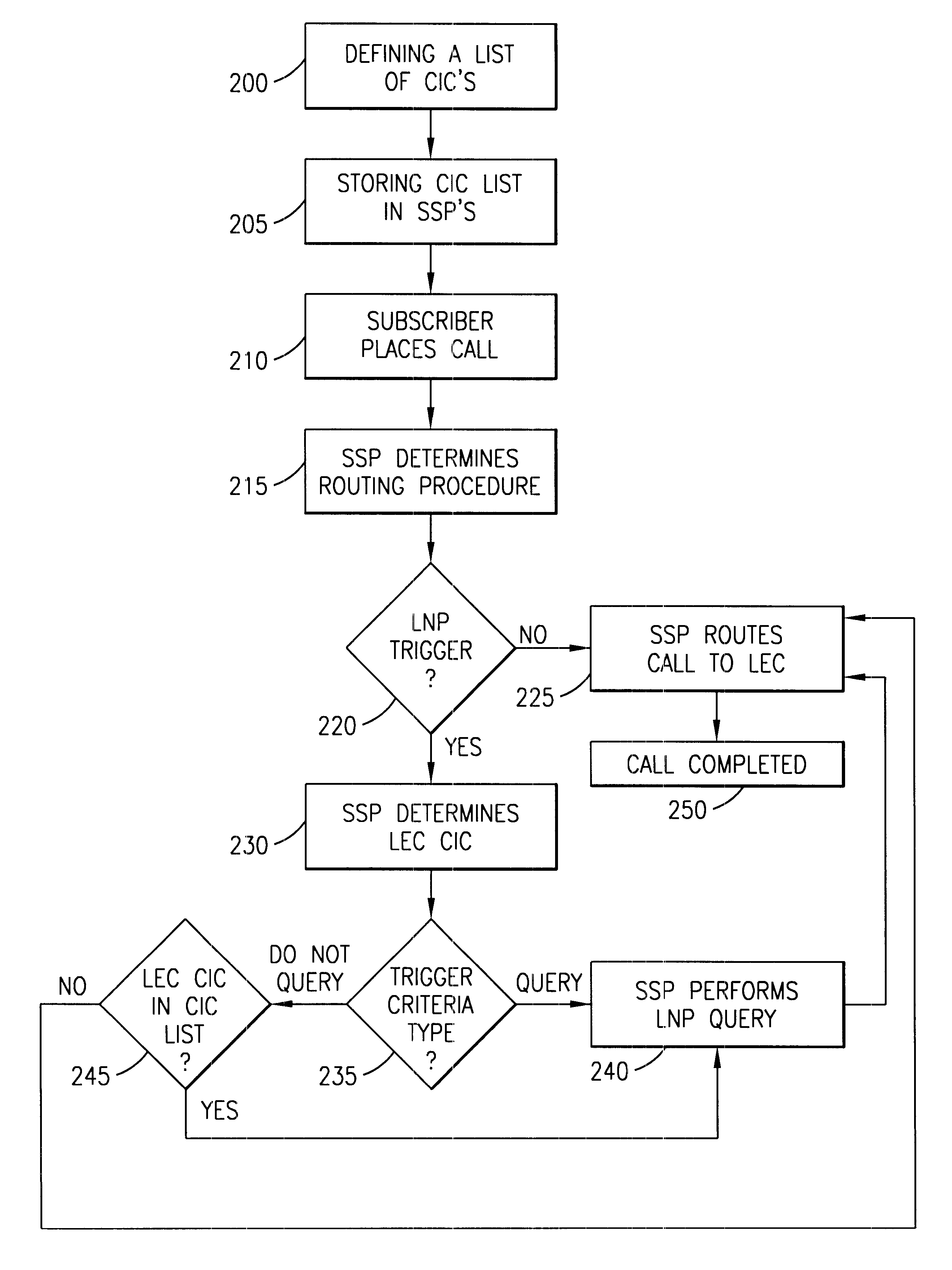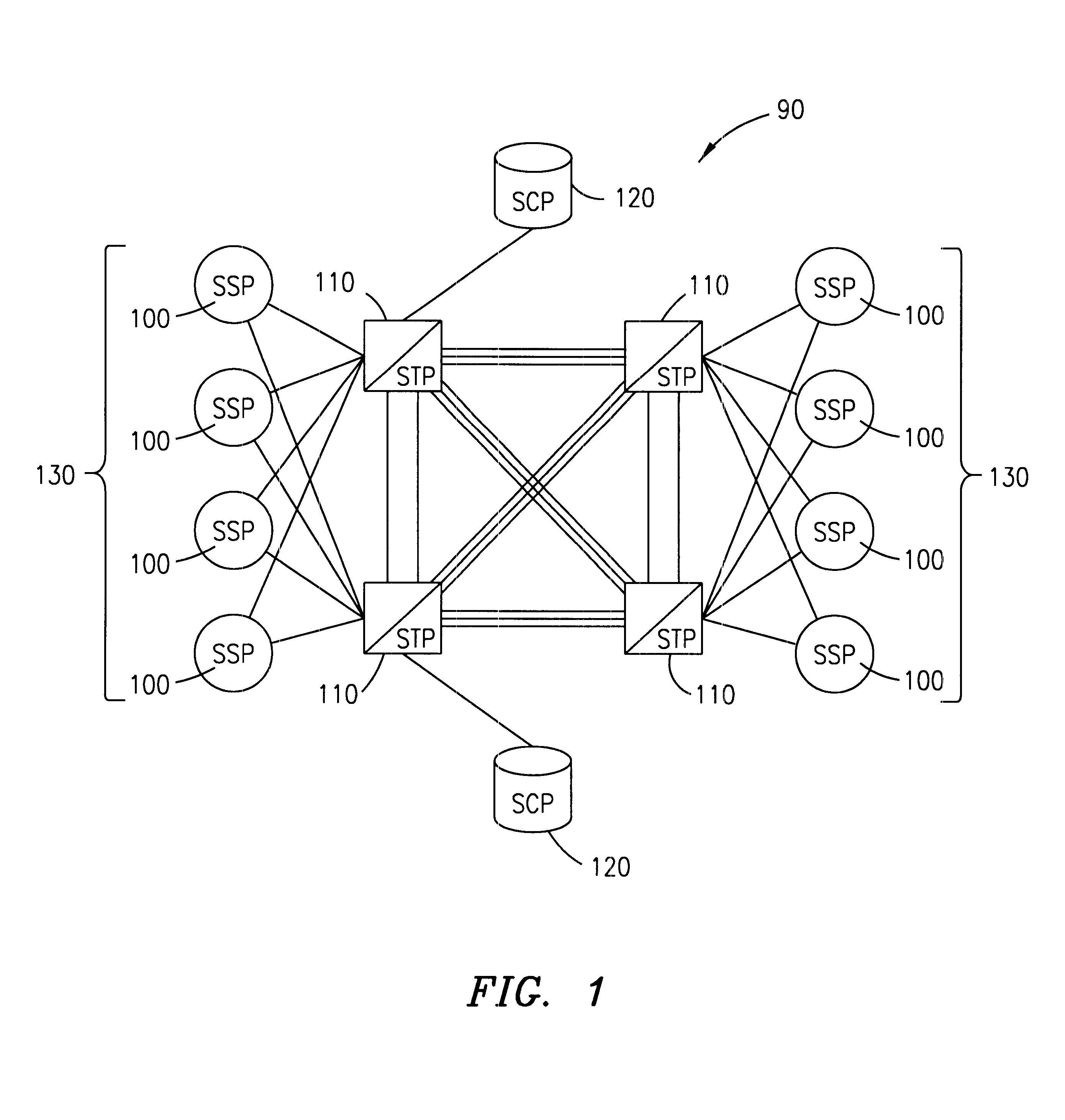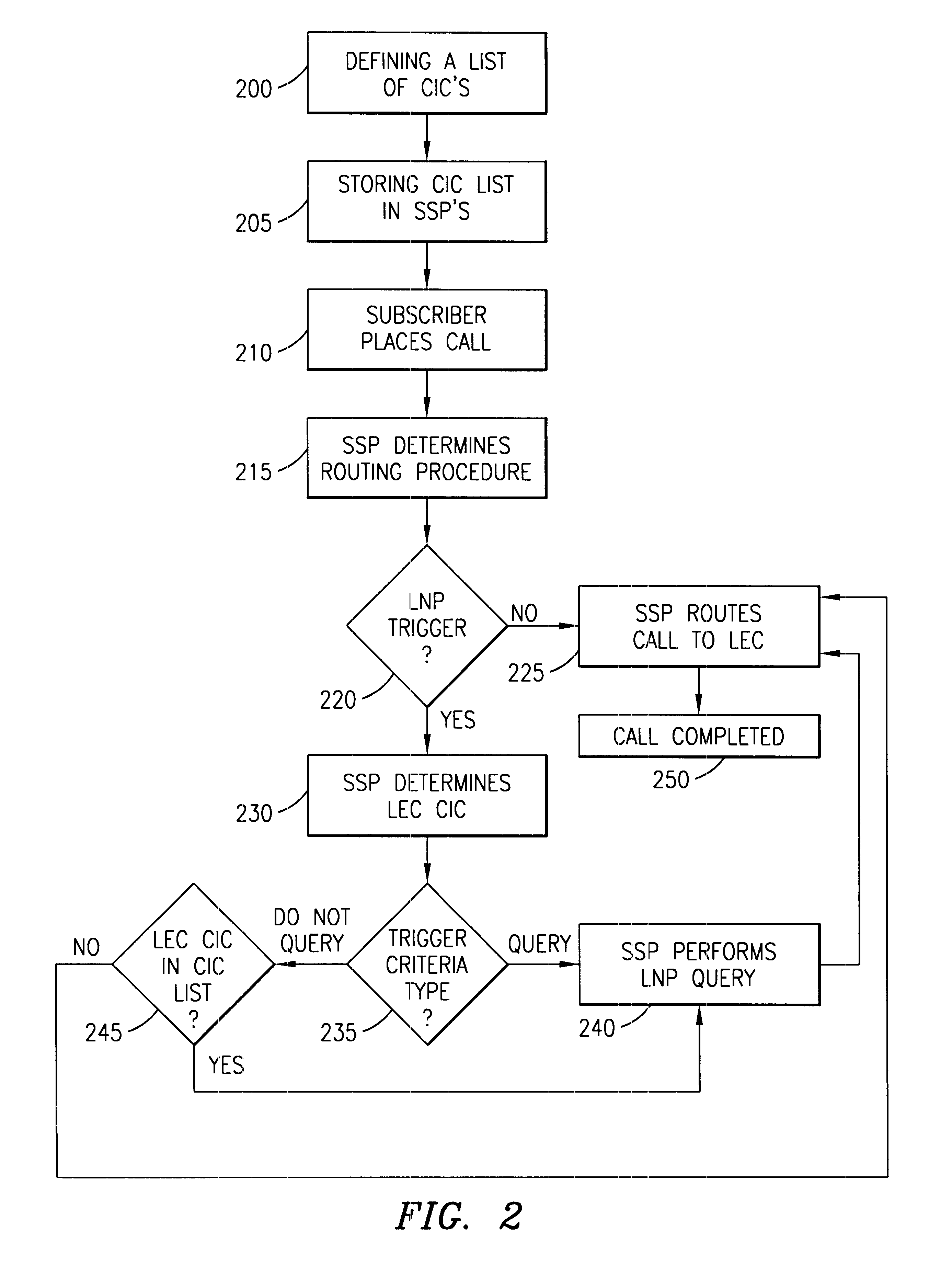Local exchange carrier escape list for local number portability
a local exchange carrier and portability technology, applied in the field of telecommunications systems and methods for managing ported calls, can solve the problems of not being able to provide lnp querying capability for all lecs, excessive switching and delays, etc., and achieve the effect of preventing routing
- Summary
- Abstract
- Description
- Claims
- Application Information
AI Technical Summary
Benefits of technology
Problems solved by technology
Method used
Image
Examples
Embodiment Construction
The numerous innovative teachings of the present application will be described with particular reference to the presently preferred exemplary embodiments. However, it should be understood that this class of embodiments provides only a few examples of the many advantageous uses of the innovative teachings herein. In general, statements made in the specification of the present application do not necessarily delimit any of the various claimed inventions. Moreover, some statements may apply to some inventive features but not to others.
With reference now to FIG. 2 of the drawings, a preferred embodiment of the LNP querying system of the present invention for LEC routed calls is depicted in which a list of carriers, by Carrier Identification Codes, is defined (step 200) and stored (step 205), for example, as a database in a memory, in the SSPs (local service providers).
Once a subscriber places a call (step 210), the originating SSP 100 determines the routing procedure (step 215), e.g., by...
PUM
 Login to View More
Login to View More Abstract
Description
Claims
Application Information
 Login to View More
Login to View More - R&D
- Intellectual Property
- Life Sciences
- Materials
- Tech Scout
- Unparalleled Data Quality
- Higher Quality Content
- 60% Fewer Hallucinations
Browse by: Latest US Patents, China's latest patents, Technical Efficacy Thesaurus, Application Domain, Technology Topic, Popular Technical Reports.
© 2025 PatSnap. All rights reserved.Legal|Privacy policy|Modern Slavery Act Transparency Statement|Sitemap|About US| Contact US: help@patsnap.com



